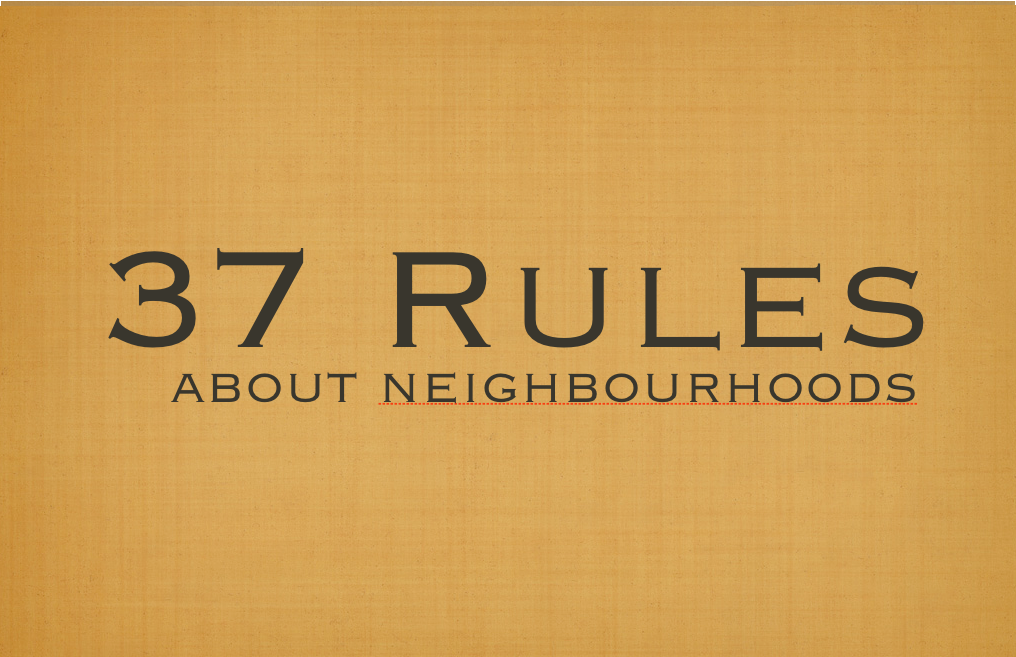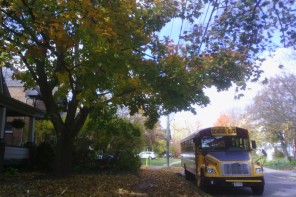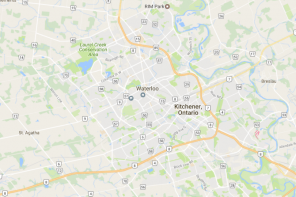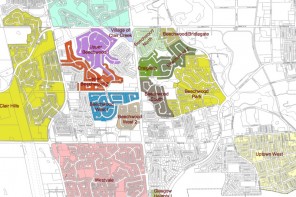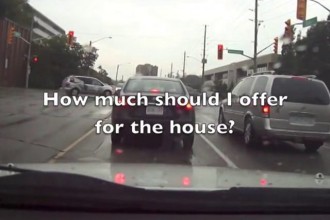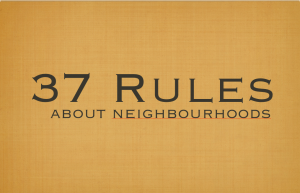 For me, a good neighbourhood is more important than a great house. Good neighbourhoods mean great neighbours, low crime, good schools, good walkability, shops and amenities… But how do you know where the best neighbourhood for you is? Good neighbourhoods reveal themselves in many ways. The collected rules below are from my soon to be published book – 365 Rules about Real Estate.
For me, a good neighbourhood is more important than a great house. Good neighbourhoods mean great neighbours, low crime, good schools, good walkability, shops and amenities… But how do you know where the best neighbourhood for you is? Good neighbourhoods reveal themselves in many ways. The collected rules below are from my soon to be published book – 365 Rules about Real Estate.
37 Rules about Neighbourhoods
Rule #65: Neighbourhoods are often more important than houses. It’s better to have an okay house in a great neighbourhood than a great house in an okay neighbourhood.
Rule #66: Buy a house in a neighbourhood in transition. Transitional neighbourhoods are typically close to major metropolitan areas and were once neglected and less desirable. Look for the clues. Is there a new restaurant where a tattoo parlor used to be? Has a Starbucks just opened or are there new shops and nightlife? Is there any major construction? These are all good signs that a neighbourhood is on the upswing.
Rule #67: Neighbourhoods appreciate at different rates. The best neighbourhoods and those in transition rise faster than average. Other neighbourhoods decline.
Rule #68: Don’t buy a house in a flight path. If you have an airport in town, find out if planes fly overhead. Airports are getting bigger and busier. What now might be a minor annoyance can become a major one.
Rule #69: Live in a university town. Universities provide jobs and other economic benefits to a city. Universities are stable industries that do not follow ups and downs in the economy. But don’t buy a house too close to a university. Universities are growing. Students would rather live in a house than a dorm or apartment unit. Renters don’t take care of their properties as well as owners. Students have priorities that don’t include maintaining their temporary homes.
Rule #70: You are not insured against riot, act of war or insurrection. Don’t buy a home next to a hockey rink, stadium or auditorium.
Rule #71: View the property and the neighbourhood with google maps and google earth. Get a bird’s eye view of the neighbourhood.
Rule #72: Research amenities. Part of knowing what a property is worth means learning about the neighbourhood in which a property is located. Be it close to a great school, or easy access to the highway, the value of a property is partly determined by what it’s close to.
Rule #73: Research market value: Once you know about the property, learn what the market will pay for similar properties. Find a basic market value range based on houses of similar style and age. Real estate is very localized; a three-bedroom bungalow in one area may sell for many tens of thousands of dollars more or less than a similar house in a different neighbourhood.
Rule #74: Drive and walk around the neighbourhood on different days, at different times. Use your senses of sight, smell and hearing to discover the neighbourhood’s influences. See if there’s any excessive noise created by schools, stadiums, highways, airports and railroads. The landscaping of the yards and the cars in the driveways can give you a good indication of the demographics in the neighbourhood.
Rule #75: Don’t buy a house near a go-kart track, gas station or auto garage. They are noisy.
Rule # 78: Beware of empty lots. If your prospective new house backs onto a cornfield, find out what is proposed to be built there. Will it be a highway extension or high-rise condo (bad). Will it be a park (good).
Rule #79: Be on the look out for any legal non-conforming businesses. It will be something that does not comply with, nor conform to, the present zoning status for its location but was likely there before the zoning changed. What this means is if the zoning of an area changes from industrial to allow for a new housing, the factories and businesses that are already there are allowed to stay so long as they continue operation.
Rule #80: Don’t buy a house near a coal mine, nuclear power plant, or wind farm. They can be noisy, dangerous, and smelly.
Rule #81: Don’t buy a house near a gravel pit, factory, or freeway. You don’t need to be near areas highly traveled by heavy equipment.
Rule #82: Investigate the demographics of your neighbourhood. If you have young children, you may not want to move into a senior’s neighbourhood. The same is true if you are in your late 20’s or early 30’s, you might not want to move into a neighbourhood full of university students. Realtors have information on the demographics of neighbourhood.
Rule #83: If you buy in a new area you’ll probably have to put up with construction vehicles, poor roads, dirt and dust and the unknown of what might be built in the neighbourhood.
Rule #84: With new neighbourhoods you’ll have to guess about what future traffic and noise levels are. You have to wait for the trees to grow up, the foundation to settle and even for the local school to be constructed.
Rule #85: Home mail delivery is still carried out in older neighbourhoods but not in new ones. They get smartboxes.
Rule #86: Find out if your neighbourhood has a community or neighbourhood association. There may be rules and regulations that negatively impact your lifestyle. There may be rules against storing your boat or RV in the driveway or the color you can paint the outside of your house. There may be restrictions about fence height or installing an above ground pool.
Rule #87: If your neighbourhood has a neighbourhood association, join the board. If you don’t want to do that, at least go to the meetings so you know what’s gaining on.
Rule #88: Most people don’t want to spend more than 40 minutes commuting to work. A good commute is not more than 25 minutes. There are hidden costs (financial and emotional). Also, pay attention to the direction of the sun on your commute to work. Facing the sun on your drive to work and again on the way home from work is no fun at all.
Rule #87: Don’t by a house downwind from a cow pasture, mink farm, chicken farm, pig farm, sewage treatment plant or the city dump.
Rule #88: A neighbourhood with a greater percentage of homeowners preserves its value and quality better than one with a high percentage of renters.
Rule #89: Safety is an important concern for many homeowners. Check the local police crime statistics. Most departments publish “Incidents Reports”
Rule #90: Buy a house in the neighbourhood with good topography. With many new subdivisions, construction begins by clearing off all of the land and flattening out the terrain. It is much more interesting when the builder builds to conform to the land.
Rule #91: Buy in a good school zone, even if you don’t have children. Homes in a good schools zone not only appreciate at a higher than average rate, they also are easier to resell.
Rule #92: Pay attention to the number of for sale signs in the neighbourhood. New neighbourhoods tend to have far more similar homes for sale. This gives you a better bargaining position.
Rule #93: Real estate boards and associations keep all kinds of sales statistics for neighbourhoods. Ask your Realtor to share this information with you.
Rule #94: Neighbourhoods typically go through a lifecycle that last 50 to 70 years. Those phases include growth, stability, and decline. The fourth phase is revitalization or gentrification, which will increase in value again. Look for the signs to determine which phase a neighbourhood is in.
Rule # 95: If you’re looking for a neighbourhood with lots of children, look for basketball hoops in the driveway and bikes on the front lawn. Drive through the neighbourhood on a Saturday at Sunday in the summertime or just when school is getting out for the day.
Rule #96: New neighbourhoods have a much higher turnover (or churn rate) than old neighbourhoods. New neighbourhoods have a much higher percentage of first-time homebuyers. Many first-time homebuyers move again in five to seven years.
Rule #97: There is a trend back to urban from suburban. People like walkable neighbourhoods,old neighbourhoods and houses are more interesting than new ones. Since 1995 the price of homes in downtown areas have risen at a faster rate than similar homes in the suburbs
Rule #98: Find out about the neighbourhood zoning. Zoning rules are established by various levels of government and deal with how specific parcels and individual lots of land may be used. One of the main reasons for zoning requirements is to ensure that adjacent lands have compatible uses. Most people would not want a factory built next to their house. Air pollution, noise, and other undesirable factors may make the factory and the house incompatible.
Rule #99: Choose a good neighbourhood. Neighbourhoods appreciat at different rates. Good neighbourhoods and neighbourhoods in transition appreciate at a better than average rate. Some places grow and prosper while others shrink and die. Ten or twenty years can make a world of difference.
Rule #100: Buy the smallest house on your street. The law of comparative value is a measure of homes in a neighbourhood. You are looking for a home with positive relative value. You want to buy the smallest home on the street, as the larger homes will pull up your value.
Rule #101: Be nice to your neighbors. They are a wealth of information about the neighbourhood. They’ll watch your house when you’re away and might even shovel your sidewalk.
Get the book – 365 Rules about Real Estate – free

